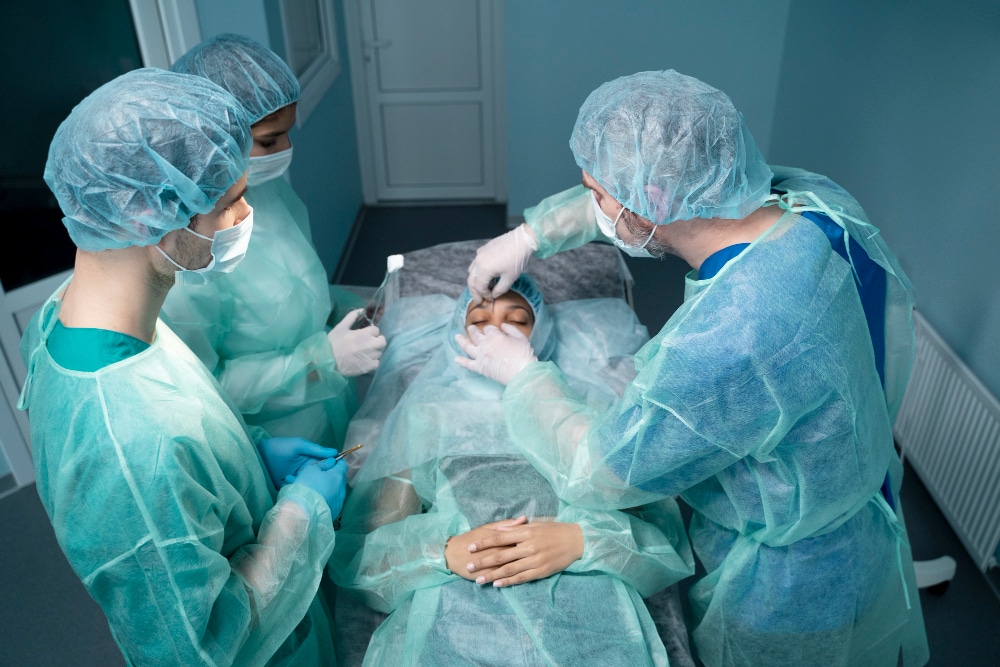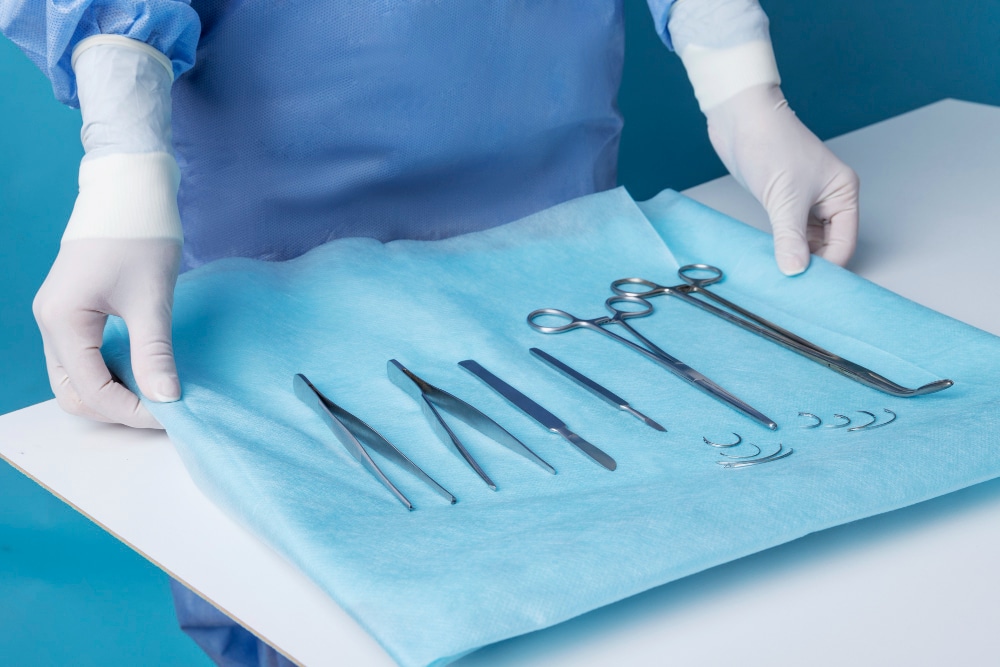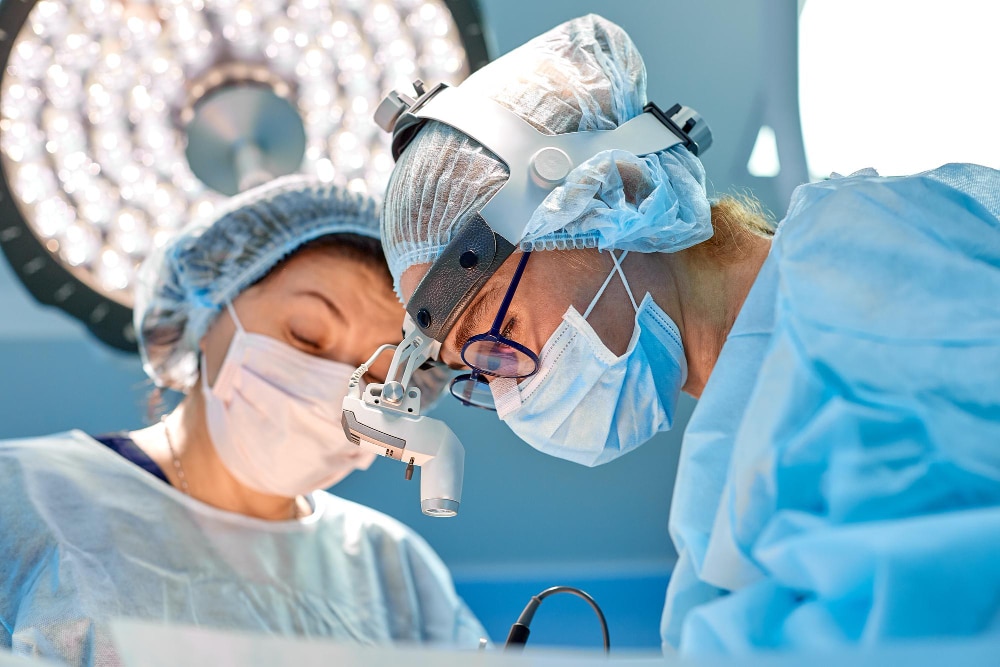Are you someone who has undergone jaw surgery, only to be disappointed with the results? If so, you’re not alone. Many individuals find themselves in a position where the outcome of their orthognathic jaw surgery falls short of their expectations. But fear not, because mastering the art of orthognathic jaw revision can provide you with the opportunity to correct any unsuccessful jaw surgeries.
In this article, we will delve into the key knowledge and skills required to successfully revise jaw surgery and achieve the desired results. From understanding the factors that contribute to an unsuccessful surgery to exploring the various techniques and advancements in orthognathic jaw revision, we will arm you with the knowledge you need to make informed decisions about your corrective options.
Whether you are a patient seeking revisions or a medical professional looking to enhance your skills in jaw revision surgery, this article will serve as a valuable resource. So, let’s embark on the journey of mastering the art of orthognathic jaw revision together and unlock the potential for a successful outcome.
Common Issues and Complications after Jaw Surgery
Jaw surgery, also known as orthognathic surgery, is a complex procedure that aims to correct various conditions affecting the jaw and facial structure. While the primary goal of jaw surgery is to improve functionality and aesthetics, there are instances where patients may experience issues or complications following the procedure.
One common issue that individuals face after jaw surgery is an unsatisfactory aesthetic outcome. This can include asymmetry, misalignment, or an unnatural appearance of the jawline. Other complications may arise from surgical errors, such as nerve damage, infection, or excessive bleeding.
Furthermore, some patients may find that their initial jaw surgery did not adequately address their functional concerns. Difficulties with chewing, speaking, or breathing may persist, leading to frustration and a diminished quality of life. These common issues and complications highlight the need for effective jaw revision surgery to correct and enhance the results of the initial procedure.
Understanding the Importance of Successful Jaw Surgery
Successful jaw surgery can have a profound impact on a person’s life. Not only can it improve facial aesthetics and boost self-confidence, but it can also address functional problems that hinder day-to-day activities. Understanding the importance of successful jaw surgery is crucial for both patients and medical professionals involved in the revision process.
For patients, the desire for a successful jaw surgery stems from the desire to regain normalcy and functionality. Jaw misalignments can have a significant impact on speech, chewing, and overall facial harmony. By addressing these concerns through revision surgery, patients can experience a renewed sense of confidence and improved quality of life.
From a medical professional’s perspective, successful jaw revision surgery serves as a testament to their skills and expertise. It showcases their ability to correct previous surgical errors and deliver the desired outcomes for their patients. It is essential for surgeons to stay updated with the latest advancements in orthognathic jaw revision techniques and continuously refine their skills to provide the best possible results.

The Role of an Orthognathic Surgeon in Jaw Revision
Orthognathic surgeons play a critical role in the jaw revision process. These highly specialized professionals possess the knowledge and skills required to evaluate, plan, and execute successful revision surgeries. Their expertise extends beyond the initial jaw surgery, as they are trained to understand the complexities of revision cases and navigate the unique challenges they present.
The first step in the jaw revision process is a thorough evaluation by the orthognathic surgeon. This evaluation involves a comprehensive examination of the patient’s facial structure, bite alignment, and any functional issues they may be experiencing. Through advanced imaging techniques, such as 3D imaging and virtual surgical planning, surgeons can create a detailed treatment plan tailored to the individual’s specific needs.
During the revision surgery, the orthognathic surgeon will address the areas of concern identified during the evaluation. This may involve correcting asymmetry, realigning the jawbones, or improving the overall balance and harmony of the facial structure. The surgeon’s skill and precision are crucial in achieving the desired outcome while minimizing the risk of complications.
In addition to technical expertise, orthognathic surgeons also play a vital role in guiding patients through the revision process. They provide detailed explanations of the procedure, manage expectations, and ensure that patients are well-informed and comfortable throughout the journey. This patient-centered approach is essential for fostering trust and achieving successful outcomes in jaw revision surgeries.
Key knowledge and skills required for successful jaw revision
Orthognathic jaw revision is a complex procedure that requires specialized knowledge and skills. Understanding the key factors that contribute to an unsuccessful jaw surgery is crucial in order to effectively correct any issues. One of the main reasons for an unsuccessful surgery is inadequate treatment planning. It is essential for the surgeon to thoroughly evaluate the patient’s condition, including the skeletal structure, bite alignment, and aesthetic goals, before proceeding with the surgery. Without proper planning, the desired outcome may not be achieved, leading to the need for revision surgery.
Another important aspect of successful jaw revision is the surgeon’s expertise in performing the procedure. Jaw revision surgery often involves intricate adjustments to the bone structure, requiring precision and skill. Surgeons who have extensive experience in orthognathic jaw revision are better equipped to handle complex cases and deliver satisfactory results. It is crucial for patients to seek out surgeons with a proven track record in jaw revision surgery to ensure the best possible outcome.
In addition to the surgeon’s expertise, collaboration with a multidisciplinary team is often necessary for successful jaw revision. Orthodontists, prosthodontists, and other specialists may be involved in the treatment plan to address not only the skeletal issues but also the occlusion and overall facial aesthetics. The coordination between these professionals is essential to achieve a harmonious and functional outcome.
Preparing for jaw revision surgery
Before undergoing jaw revision surgery, it is important for patients to have a clear understanding of their goals and expectations. Communication with the surgeon is vital in order to convey these expectations and ensure they are achievable. Through thorough discussions and evaluations, the surgeon can determine the most appropriate treatment plan for each individual.
In some cases, additional imaging may be required to assess the existing condition and plan for the revision surgery. Advanced imaging techniques such as cone-beam computed tomography (CBCT) can provide detailed 3D images of the facial structures, aiding in the planning and execution of the revision surgery. These images allow the surgeon to analyze the bone structure, identify any abnormalities, and plan the necessary adjustments.
Patients should also prepare themselves physically and mentally for the revision surgery. It is important to follow any preoperative instructions provided by the surgeon, such as dietary restrictions or medication adjustments. Additionally, maintaining a healthy lifestyle, including regular exercise and a balanced diet, can contribute to a smoother recovery process.

The jaw revision process: what to expect
The jaw revision process can vary depending on the specifics of each case. However, there are some general steps and considerations to be aware of when undergoing a revision surgery.
Firstly, the surgeon will review the initial surgery records and imaging to assess the existing condition. This evaluation will help determine the extent of the revision required and the most appropriate approach to achieve the desired outcome. The surgeon may also discuss the risks and benefits associated with the revision surgery, ensuring that the patient is well-informed and comfortable with the proposed plan.
Once the treatment plan is established, the surgeon will schedule the revision surgery. This may involve adjustments to the previous bone cuts, repositioning of the jaw segments, or additional bone grafts to correct any deficiencies. The surgical technique may vary depending on the specific case and the surgeon’s expertise.
During the surgery, the patient will be under general anesthesia to ensure their comfort and safety. The surgeon will make incisions and access the jawbone to perform the necessary adjustments. The use of modern techniques, such as computer-assisted surgery or virtual surgical planning, can aid in achieving precise results.
After the surgery, the patient will be closely monitored to ensure proper healing and recovery. Pain medication and antibiotics may be prescribed to manage any discomfort and prevent infection. Regular follow-up appointments will be scheduled to monitor the progress and make any necessary adjustments. It is important for patients to adhere to the postoperative instructions provided by the surgeon to optimize the healing process.
In some cases, orthodontic treatment may be necessary after the jaw revision surgery to fine-tune the bite alignment and achieve optimal results. This may involve the use of braces or aligners to gradually move the teeth into the correct position. The duration of the orthodontic treatment will vary depending on the individual case and the desired outcome.
Recovering from Jaw Revision Surgery
Orthognathic jaw revision surgery is a complex procedure that requires careful planning and execution. The recovery process plays a crucial role in ensuring the success of the revision surgery and the overall satisfaction of the patient.
- Understanding the Recovery Process
The recovery process for jaw revision surgery is similar to that of the initial jaw surgery. It involves a period of healing and adjustment, during which the patient needs to follow specific guidelines provided by their surgeon. These guidelines may include dietary restrictions, pain management strategies, and post-operative care instructions. It is important for patients to have realistic expectations about the recovery process and to be patient with their body’s healing timeline.
Key Takeaway: The recovery process for jaw revision surgery is crucial for a successful outcome. Patients should closely follow the guidelines provided by their surgeon and have realistic expectations about the healing timeline.
- Managing Pain and Discomfort
Pain and discomfort are common after jaw revision surgery, but there are various strategies that can help manage these symptoms. The surgeon may prescribe pain medication or recommend over-the-counter pain relievers. Additionally, applying cold compresses to the affected area can help reduce swelling and alleviate pain. It is important for patients to communicate any excessive or prolonged pain to their surgeon for appropriate management.
Key Takeaway: Pain and discomfort can be managed through medication, cold compresses, and communication with the surgeon. It is important for patients to report any excessive or prolonged pain for proper evaluation and management.
- Adhering to Dietary Restrictions
Following jaw revision surgery, patients may be placed on a soft or liquid diet for a period of time to allow the jaw to heal properly. It is important to strictly adhere to these dietary restrictions to avoid complications and promote healing. Patients should consult with their surgeon or a registered dietitian to ensure they are receiving adequate nutrition during this period.
Key Takeaway: Adhering to dietary restrictions is essential for proper healing after jaw revision surgery. Patients should seek guidance from their surgeon or a registered dietitian to ensure they are receiving adequate nutrition during the recovery period.
Potential Risks and Complications of Jaw Revision Surgery
As with any surgical procedure, jaw revision surgery carries certain risks and potential complications. Understanding these risks is crucial for both patients and medical professionals involved in the revision process. By being aware of potential complications, steps can be taken to minimize their occurrence and ensure a successful outcome.
- Infection
Infection is a potential risk following jaw revision surgery, as it is with any surgical procedure. Patients should be vigilant about maintaining good oral hygiene and following the post-operative care instructions provided by their surgeon. Signs of infection may include increased pain, swelling, redness, or discharge from the surgical site. If any symptoms of infection are present, it is important to contact the surgeon immediately for evaluation and appropriate treatment.
Key Takeaway: Infection is a potential risk following jaw revision surgery. Patients should maintain good oral hygiene and report any signs of infection to their surgeon for prompt evaluation and treatment.
- Nerve Damage
Nerve damage is another potential complication of jaw revision surgery. The nerves that supply sensation to the face and mouth can be delicate and may be affected during the surgical procedure. Patients may experience temporary or permanent numbness, tingling, or altered sensation in the affected areas. While nerve damage is a potential risk, it is important to note that the occurrence of significant nerve damage is rare.
Key Takeaway: Nerve damage is a potential complication of jaw revision surgery, but significant nerve damage is rare. Patients should be aware of potential changes in sensation and report any concerns to their surgeon for evaluation.
- Unsatisfactory Aesthetic Results
One of the primary reasons for seeking jaw revision surgery is to improve the aesthetic appearance of the jaw and face. However, there is a possibility that the results may not meet the patient’s expectations. It is important for patients to have open and honest discussions with their surgeon about their desired outcomes and realistic expectations. By having a clear understanding of the limitations and potential outcomes, patients can make informed decisions about their revision surgery.
Key Takeaway: Unsatisfactory aesthetic results are a potential risk of jaw revision surgery. Open and honest communication with the surgeon about desired outcomes and realistic expectations is crucial for making informed decisions about the revision surgery.

Conclusion: Achieving a Successful Jaw Revision and Improved Quality of Life
Mastering the art of orthognathic jaw revision requires a deep understanding of the factors that contribute to an unsuccessful surgery, as well as the knowledge and skills to correct these issues. By following the guidelines for recovery, being aware of potential risks and complications, and maintaining open communication with the surgeon, patients can increase their chances of achieving a successful jaw revision and improved quality of life.
For medical professionals, continuous education and staying up to date with advancements in orthognathic jaw revision techniques are essential for providing the best possible care to patients seeking revisions. The field of orthognathic jaw revision is constantly evolving, and staying informed and skilled is crucial for achieving successful outcomes.
Remember, if you have undergone jaw surgery that did not meet your expectations, there are options available to you. By considering the factors discussed in this article and consulting with a qualified surgeon, you can take control of your journey towards a successful jaw revision and a better quality of life.






